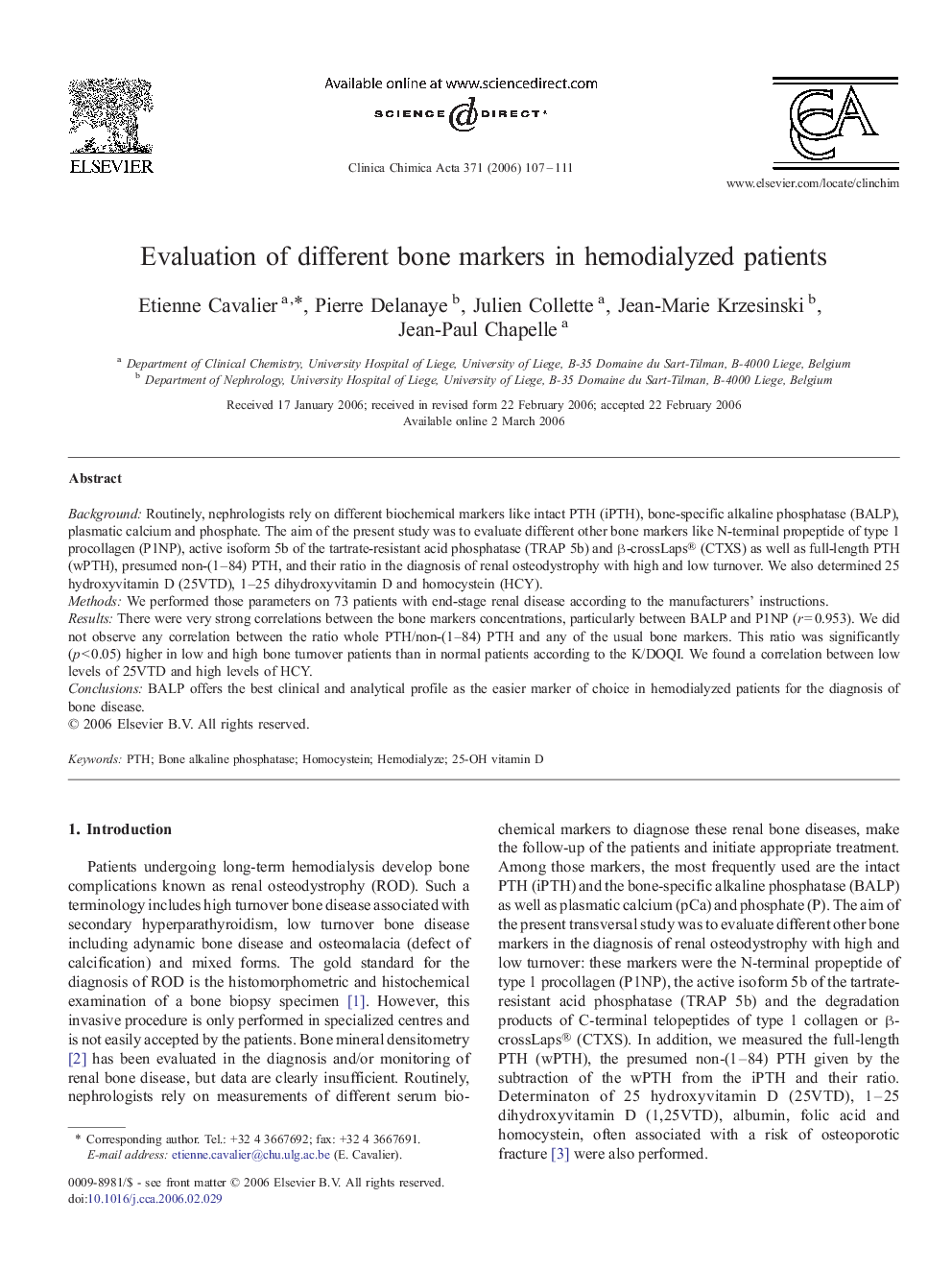| Article ID | Journal | Published Year | Pages | File Type |
|---|---|---|---|---|
| 1967819 | Clinica Chimica Acta | 2006 | 5 Pages |
BackgroundRoutinely, nephrologists rely on different biochemical markers like intact PTH (iPTH), bone-specific alkaline phosphatase (BALP), plasmatic calcium and phosphate. The aim of the present study was to evaluate different other bone markers like N-terminal propeptide of type 1 procollagen (P1NP), active isoform 5b of the tartrate-resistant acid phosphatase (TRAP 5b) and β-crossLaps® (CTXS) as well as full-length PTH (wPTH), presumed non-(1–84) PTH, and their ratio in the diagnosis of renal osteodystrophy with high and low turnover. We also determined 25 hydroxyvitamin D (25VTD), 1–25 dihydroxyvitamin D and homocystein (HCY).MethodsWe performed those parameters on 73 patients with end-stage renal disease according to the manufacturers' instructions.ResultsThere were very strong correlations between the bone markers concentrations, particularly between BALP and P1NP (r = 0.953). We did not observe any correlation between the ratio whole PTH/non-(1–84) PTH and any of the usual bone markers. This ratio was significantly (p < 0.05) higher in low and high bone turnover patients than in normal patients according to the K/DOQI. We found a correlation between low levels of 25VTD and high levels of HCY.ConclusionsBALP offers the best clinical and analytical profile as the easier marker of choice in hemodialyzed patients for the diagnosis of bone disease.
